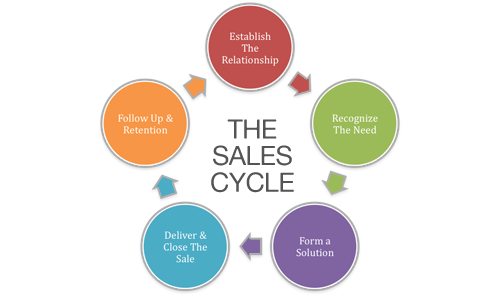
Many businesses have a sales cycle, and this is the process by which your sales team completes a sale (starting with the initial contact and ending with a purchase). A slow sales cycle doesn’t necessarily mean you’re slowly building rapport with your prospective customer. The “take your time” mantra just doesn’t fit well here. In fact, in most cases, a slow sales cycle can actually hurt you. A study conducted by Implisit found that the average time it took for a lead to convert to an opportunity was 84 days, and the time it took for those opportunities to convert to purchases was 18 days. In total, that makes the average sales cycle take 102 days. This number definitely has room for improvement.
The Tools To A Faster Sales Cycle
To aid your efforts to speed up your sales cycle, you should invest in customer service software. A study conducted by the Aberdeen Group found that 47% of high-performing sales organizations believe they need to adopt a process to streamline contracts, proposals, ordering, quoting, and sales collateral workflow. This is where cloud-based software comes in. Customer relationship management software (CRM) helps sales teams better manage quote generation, produce automatic reports, keep better track of leads, and much more. It also offers the ability to integrate with different platforms to keep the entire process in one place.
When keeping tracking of your sales cycle, try segmenting them to account for different sales methods. For example, outbound leads (email marketing to cold lists and cold calling) take longer than inbound leads (customers that reach out to you directly), and you should consider separate (as well as combined) calculations for both.Choose an effective sales email templates, once you have a solid number, you can use it to identify improvements and fallbacks.
The Benefits of a Quick Sales Cycle
The goal is to expedite the sales cycle without compromising your relationship with your customers. Sure, there are some potential clients that are going to have a much larger sales cycle, like big enterprises. However, if you apply the right principles and technology, you’ll be headed in the right direction towards shaving some of those days off. If you think short sales cycles aren’t crucial, think again. There a few reasons why you should enforce a faster sales cycle in your business.
Learn What Works Quicker
The quicker your sales cycle is, the faster you’ll be able to identify the most lucrative sales process for your team. Think of it as A/B testing. A 50-day sales cycle will help you determine the best closing method twice as fast as a 100-day sales cycle. CRM can also help you improve the semantics of the sales cycle, thereby speeding up the process.
The 2015 MHI Sales Best Practices Study found that 26% of sales organizations think their CRM allows them to effectively collaborate across departments, and 85% of world-class sales organizations believe the same. Through collaboration tools, team members can communicate better, agree on what’s working best for the sales cycle, and maintain momentum.
Employ The Best Sales Team
It takes time to evaluate how effective your sales team is at their job. Unfortunately, longer sales cycles take a while to demonstrate to employers whether the sales team is truly doing a good job. With short sales cycles, you can evaluate your team members quicker. If you’ve cut your sales cycle down to an average of 30 days and you complete employee evaluations on a 6-month basis, you know that that employee should have at least six sales.
If your sales cycle is 100 days, that’s hardly enough time to properly gauge the work ethic and performance of a particular person. Rather than wait up to a year to find out if an employee is truly the right fit, you should be able to leverage short sales cycles to get to the root of your evaluations quicker.
Improve The Product Quicker
When you develop a product and take it to market, you depend on your sales team to move it. Because the sales team is constantly dealing with apprehension and reasons why a particular product might not work for a client, they can come back to the product team with valuable feedback. This is especially true for startups. The faster you get that feedback, the faster you can incorporate product changes and make alterations that will make a difference to your target customer. Most businesses can’t afford to wait 102 days to get the proper feedback on the products and services they offer, and rather than lose time on a loose sales process, you’ll want to employ practics that get results quicker.
